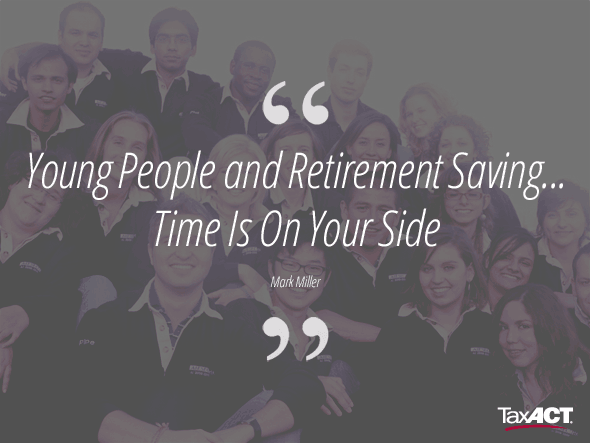“Time is on my side” the old pop lyric says, and truer words have never been spoken when it comes to young adults and retirement saving.
Getting an early start is the best thing you can do for yourself, even if you’re not able to contribute much.
When you’re in your 20s and 30s, you’ve got plenty of time to benefit from the magic of compound interest and allow the market to bounce through periods of volatility.
It’s also important to develop good habits early on in order to maximize savings, avoid the temptation to tap retirement assets, and monitor what’s happening with your savings.
Unfortunately, retirement saving isn’t always a top-of-mind subject for younger people. Following a few rules can pay big dividends down the road when retirement looms.
Start early
Nothing will have a greater impact on your success as a retirement investor, due to the effects of compound returns over time. This likely will be true even if you start small and there are bumps in the road.
The early start is especially effective if you’re worried about how much you can set aside.
Vanguard Investments published a research report a couple years ago that tested scenarios and investment strategies for investors age 25, 35 and 45, aiming for a retirement age of 65.
The investor who starts at age 25 with a moderate investment allocation and contributes 6 percent of salary will finish with 34 percent more in her account than the same investor who starts at 35 – and 64 percent more than an investor who starts at 45.
Put another way, the 35-year-old would need to boost her contribution rate to 9 percent to achieve the same result as the 25-year-old starter who was saving 6 percent.
Test this out for yourself using this simple calculator at Vanguard’s website. Simply enter your age, current retirement savings, and how much you’re saving each month.
The calculation will show you how much you’ll have saved at age 65, and how much you’d be able to withdraw at a safe rate each month. If you increase the savings even by a small amount and recalculate, you’ll see how much more you could have – mainly because you’re starting young.
In addition, Investor.gov has an online calculator that lets you see the power of compounding; pick the amount you’d like to invest and the calculator shows you how much the investment would be worth over the years.
Save as much as you can
Along with the benefit of compounding, a higher contribution rate is especially useful if you’re scared by stock market risk and prefer a less aggressive portfolio.
The Vanguard study found that a retirement saver starting at 25 saving 9 percent of salary annually with a moderate allocation finished with 13 percent more than by contributing 6 percent in an aggressively-invested account.
Capture the match
If your employer offers a matching contribution to your 401(k), make sure to contribute enough to max it out.
Young, lower-paid workers are most likely to contribute below matching contribution rates – a recent study found that 40 percent of workers in their 20s contribute below the matching rate, versus only 20 percent of those in their 50s.
Don’t cash out
Many people cash out their 401(k)s when they change jobs, rather than roll savings over to the savings plan of their new employer or over to an IRA. That interrupts the flow of compound returns and it’s very difficult to make up lost ground over time.
Another option is to leave the funds where they are if it’s a good plan. Also, remember that distributions taken before you reach the age of 59 1/2 are subject to income tax plus a 10 percent tax penalty.
Watch your fees
Fees are one of the most important determinants of long-term portfolio performance, so it’s important to know what you’re paying.
If you work for a large company, odds are that the costs are reasonable. Brightscope, which tracks 401(k) plan performance, reports that fees levied in large 401(k) plans have been falling for several years. In 2012, the average total cost in plans with $1 billion or more was just 0.34 percent. (The measure includes all of a plan’s investment and administrative costs.)
In addition, a recent Brightscope ranking of the 30 best 401(k)s found total plan costs averaging just 0.28 percent.
If you work for a small company, costs may be much higher. Brightscope says total costs in plans with $25 million or less in assets averaged 1.29 percent in 2011.
Consider a Roth IRA
Roth IRAs are one of the best investments for young adults. With a traditional IRA, you pay taxes at the end of the line, when you withdraw the money. With a Roth IRA, you pay the taxes upfront but the account is tax-free forever. That’s especially beneficial for young retirement investors for a couple reasons.
First, most people move into higher income tax brackets as they get older and make more money. So, getting taxes out of the way at lower rates makes sense.
Additionally, not only do your original contributed amounts come out tax-free, so do your investment gains.
What are some other tips on saving money for young adults?
Photo credit: aiesecinternational via photopin cc





